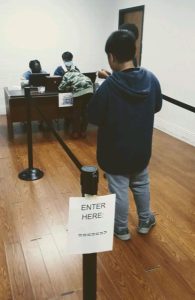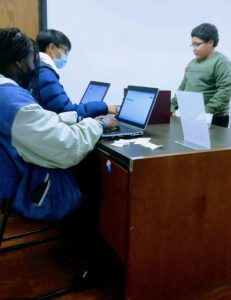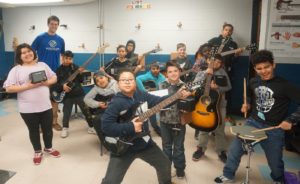The Club Buck does not stop here
Let’s go shopping!
Think back to the first time you received money that was all yours to spend on whatever you wanted. Maybe you had helped a family member with a chore and they rewarded you with a couple dollars. Or perhaps you earned the money by babysitting, mowing lawns or odd jobs. What did you do with that money? Did you have something in mind you wanted to save up for, so you carefully stashed it in a safe place? Or maybe it was just too fun to go to the store right away and buy the first thing that you could afford. Either way, wasn’t it an exciting feeling to know you had the power to make decisions about what you wanted to do with your money?
Do you remember learning how to save money for those things you needed before buying that which you wanted? How was that lesson taught to you?
Piloted in 2020, Club Bucks was a program conceived as a way for younger Club members to learn a bit about saving and spending, by earning “Club Bucks” for things such as helping clean a program space, being kind to fellow Club members, or taking on a new responsibility in the Club. The Club Bucks could then be used to purchase small items from a Club Store.
The program quickly took off in both momentum and scale. Teen Club members got involved by setting up a bank where they could help members track what Club Bucks were earned, and keep them in a ‘savings account’ if the Club member wanted to save up enough for a larger item. When the holidays rolled around, Club members asked if the store could stock items they might want to purchase as a gift for a loved one. The teens then created a gift shop complete with wrapping station for holiday shopping.
The following year, a component of philanthropy was added when members were offered the opportunity to set aside a portion of their Club Bucks to donate to a local nonprofit organization. For every “Club Buck” a member donated, 10 cents was designated towards the non-profit of their choice. A local philanthropist generously offered to match the Club members’ contributions. 8 Club members donated 928 Club Bucks equating to a $92.80 donation, and 232 Club Bucks, equating to a $23.20 to Mill City Grows and the Merrimack Valley Food Bank respectively, with both these donations receiving a 100% match.
Teens also improved the customer experience by creating a catalog of available items for each program space. This provided incentive for members to continue to earn Club Bucks during the weeks when the Club store was not open.
Why Financial literacy is important to the Club’s vision of ending generational poverty
“Financial literacy involves the skills, knowledge and tools that people need to make financial decisions that will support their personal goals”, according to the U.S. Financial Literacy and Education Commission. As a result of institutional barriers to wealth accumulation and homeownership, adults of color, — when compared to their white peers — are generally less likely to be financially literate and more likely to experience financial hardship. Financial literacy is also less common among low-income individuals. 1
The consequences of these low levels of financial literacy can be significant. Low financial literacy is correlated with a host of negative credit behaviors, including higher borrowing rates, mortgage delinquency, and home foreclosure. Financial literacy also influences important decisions about education. Youth with no savings account are less likely to attend college, and for those in college, financial stress and credit card debt have been tied to an increased likelihood of missing class and dropping out. 2
 In contrast, earlier education initiatives during and before high school can help individuals before they have had the opportunity to get into serious financial trouble and become entrenched in negative behaviors.2
In contrast, earlier education initiatives during and before high school can help individuals before they have had the opportunity to get into serious financial trouble and become entrenched in negative behaviors.2
Club Bucks moving forward
Now, in its third year, Club Bucks seeks to expand by teaching youth ages 12 and under the difference between saving and spending, how to plan a budget, understand credit and credit scores, understand the difference between financial needs and financial “wants”, how to set financial goals, and enhanced math skills.
Keystone Club (our Teen Leadership Club) will be completely responsible for pricing items, tracking sales and inventory. In running the Club Bank and Club Store, teens will learn entrepreneurial skills and improve their Excel skills as they update data.
The Club Bucks program has been generously supported from its inception by the TD Charitable Foundation. We are grateful for your commitment to helping the Boys & Girls Club of Greater Lowell work towards our vision of ending generational poverty in Lowell.
 Skills Learned through the Club Bucks program:
Skills Learned through the Club Bucks program:
- Appreciation for earning money
- Decision making around spending vs. saving
- Decision making around spending on that which you need vs. that which you want
- What a savings account is
- Customer Service
- Giving back to others
- Setting goals
- Managing inventory
- Scheduling – both store and bank hours, as well as ‘staff’ hours within each of these
Resources on Financial Literacy for youth:
1 – https://www.aecf.org/blog/financial-literacy-for-youth
2 – https://www.brookings.edu/wp-content/uploads/2018/10/ES_20181001_Financial-Literacy-Review.pdf





